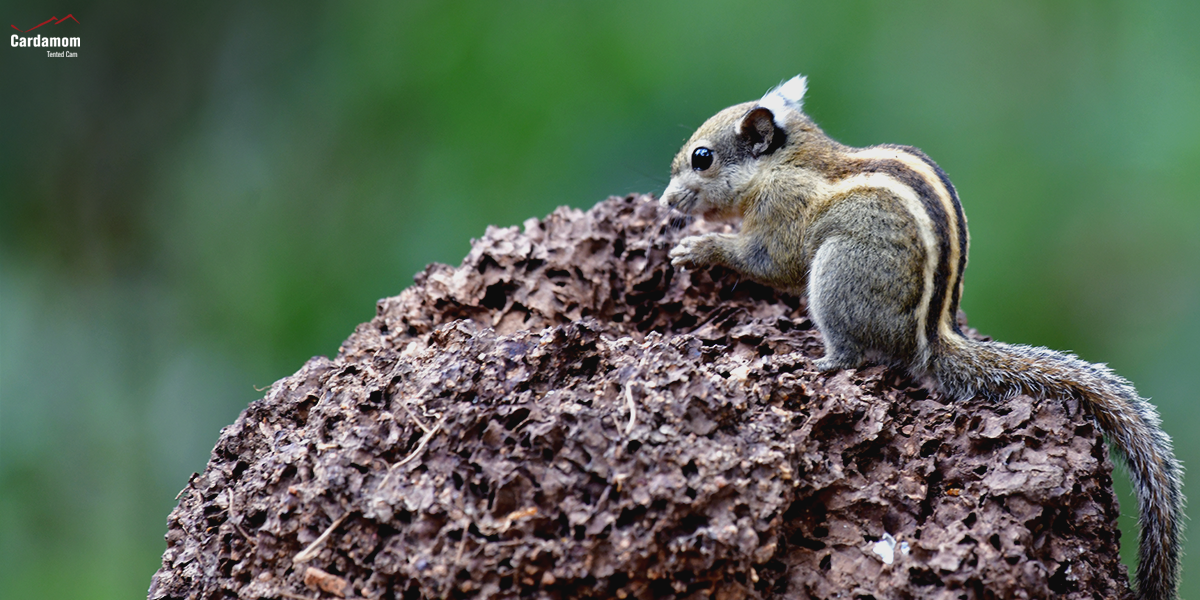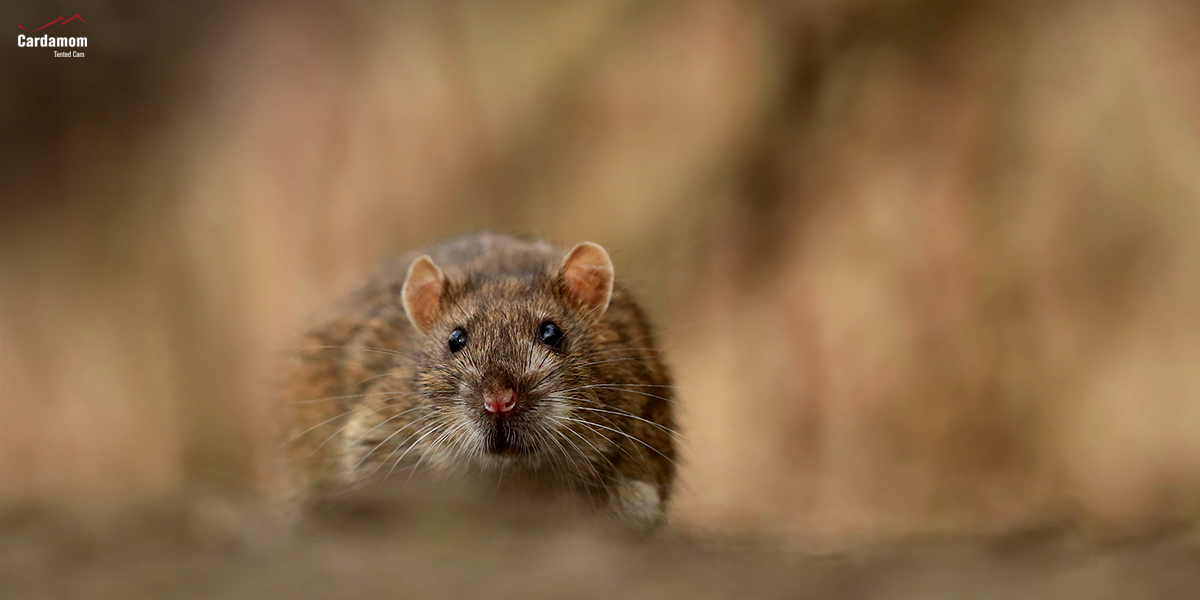Wild Rodents in Cambodia’s Wilderness | Cardamom Tented Camp
Scurrying throughout the trees and forest floor, rodents are extremely smart and determined creatures. The name “rodent” is Latin for “to gnaw”, and their front incisors and lower teeth are designed for constant chewing. Oftentimes, rodents fall victim to poachers’ trap in the rainforest. Working alongside the Wildlife Alliance Rangers, we keep the forest safe for these small mammals as well.
To kick off the year of the Rat, here is a list of our favorite rodents that you might encounter in the jungles of Cambodia:

Black Giant Squirrel
The Black Giant Squirrel, Ratufa bicolor, can be seen with your binoculars up high in the canopy of large trees. As one of the largest squirrels in the world, they rarely venture down from the trees. While jumping from tree to tree, they feed on fruits, leaves, and various seeds. As they primarily live in old-growth, primary forests, we protect our forests so they can live unencumbered and free.

Variable Squirrel
Variable squirrels get their name from color variation. Depending on the subspecies, their pelts can be black, orange-red, brown, or cream. Feeding many on fruits, research suggests that these handsome creatures exhibit the same behavior as mammals with color vision: which could help them choose between ripe and unripe fruits. Around our camp, find these stunning rodents near open woodland areas.

Cambodian striped squirrel
As you hear rustling in the trees overhead, a Cambodian striped squirrel could be nibbling on some tree bark. While occasionally seen in the lowlands, this rodent prefers to live in the thick forests. Cambodian striped squirrels, Tamiops rodolphii, have four beige stripes running from their necks to the beginning of their tail. Fun Fact: their stripes are all similar thickness and length!
Red spiny rat
This nocturnal rodent has a rich red-brown fur with hints of orange around its neck. The Red Spiny Rat, Maxomys surifer, is an omnivore feeding on fruits and insects. We make sure to leave a minimal footprint when clearing traps and patrolling, because many rodents such do not return to heavily degraded habitats or cleared forests.

Lesser bamboo rat
This stocky rodent has soft brown fur and short stocky legs. The lesser bamboo rat, Cannomys badius, has strong teeth to dig up bamboo shoots and roots. As a nocturnal animal, they stay inside their burrows during the day. You might see their small homes when walking on the trails of the Botum Sakor Rainforest.
Chestnut white-bellied rat
This orange furred creature features a white underbelly and is on the IUCN Red List. The Chestnut white-bellied rat, Niviventer fulvescens, is often found in the densest parts of the forest. This rodent helps maintain a biodiverse ecosystem by scattering seeds in dead trees and along the forest floor.

Brown rat
As brown rats, Rattus norvegicus, are found throughout the world: we welcome them around our forests too. If found near the camp, we do not “eradicate” these rodents; rather, we catch and release them near the riverbanks so they can burrow and make a new home.
As the Year of the Rat is off to a rocky start, our staff will be here patrolling the forests and protecting the rodent’s ecosystem. These little critters will be here as we keep the forest standing. While we all stay home safe right now and plan to travel tomorrow: we would like to thank our guests for their continued support. If you have any questions about planning your next trip to Botum Sakor National Park, please feel free to contact us.






